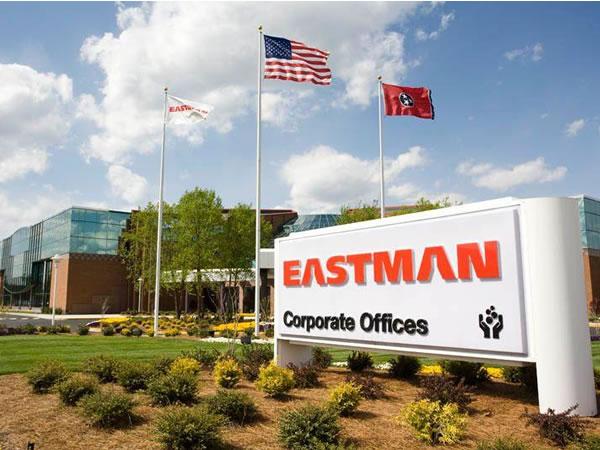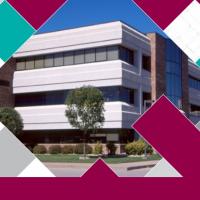
Date: 7 February 2018
"We have built a compelling, innovation-driven growth model that is unique to Eastman," said Mark Costa, Board Chair and Chief Executive Officer. "Our model consists of the combination of world-class technology platforms, relentless market engagement, and differentiated application development. In particular, application development, which both accelerates and demonstrates the value of our innovation as well as improves understanding of the value of our products, is key to growth. In addition, aggressive portfolio management has improved the structural quality of the company's earnings and cash flows. As a result, adjusted EBITDA* has increased by over 90 percent from 2010 to 2017, with about half the improvement coming from organic growth and half coming from acquisitions, and this success is despite significant macro headwinds. And over the last 3 years, the company has generated close to $3 billion of free cash flow*."
"Looking forward, we expect to leverage our innovation-driven growth model and strong cash generation to continue to deliver strong value creation," said Costa. "We expect revenue growth in our specialty products to be two times underlying markets, for our adjusted EBITDA margin to increase from the current 23 percent*, to generate approximately $3.5 billion of free cash flow over the next 3 years, and for return on invested capital to be between 10 to 15 percent*, which is significantly above cost of capital. We also expect the compound annual growth rate of our adjusted EPS to be 8 to 12 percent over the next 3 years, which would be outstanding growth and a testament to the strength of our portfolio and our innovation."
Financial Outlook: A Position of Strength
Curt Espeland, executive vice president and chief financial officer, stated that Eastman's financial position remains a point of strength for the company. Espeland highlighted the strength of Eastman's balance sheet and free cash flow generation, which together provide a strong foundation to pursue both organic and inorganic growth opportunities. Eastman expects to
generate approximately $3.5 billion in free cash flow from 2018 to 2020 with return-on-invested capital of 10 to 15 percent, which is 3 to 8 percent above cost of capital. Capital deployment will remain disciplined and balanced among capital expenditures, joint ventures and acquisitions, and returning cash to stockholders. He also reiterated the company's commitment to maintaining its investment-grade credit rating. The company has increased its dividend for eight consecutive years and expects continued dividend increases as earnings grow.
In addition, Espeland announced that Eastman's Board of Directors has approved the repurchase of up to an additional $2 billion of Eastman common stock. Espeland said, "This action taken by our Board of Directors further reinforces its confidence in our cash flow generation and its commitment to return value to stockholders." See "Board Approves Additional $2 Billion Share Repurchases."
*See "Non-GAAP Financial Measures and Reconciliations."
Advanced Materials: A Materials Solutions Business Leveraging Innovation for Growth
Brad Lich, executive vice president and chief commercial officer, discussed the company's strategy to deliver strong value creation in the Advanced Materials segment, which consists of Eastman's specialty plastics, advanced interlayers and performance films product lines. Lich said the segment is a portfolio of engineering polymers and specialty films focused on niche applications with opportunities for continuous innovation. He discussed how products such as Saflex®automotive interlayers, LLumar® performance films, and medical copolyesters are applying Eastman's innovation-driven growth model to win with their customers. He also said Advanced Materials relentlessly engages the market to activate market niches that are poised to grow 2 to 3 times the underlying market growth rate while also leveraging application development to activate markets and capture value.
According to Lich, the formula for growth in Advanced Materials is core volume growth that is at or above market rates, mix improvement due to premium products with higher margins growing faster than core products in the portfolio, and fixed cost leverage. Advanced Materials has had success driving growth through innovation, generating approximately $175 million of new business revenue in 2017, and expects approximately $250 million of new business revenue in 2020. Lich also indicated that between 2018 and 2020, Advanced Materials expects to grow sales revenue at mid-single digit rates, with an operating margin above 20 percent, and an operating earnings compounded annual growth rate of 7 to 10 percent.
Fibers: Stabilizing the Core and Building Momentum in New Applications
The Fibers segment has stabilized its core acetate tow business and is aggressively growing in new applications in the textiles market. Lich stated that Fibers has two-thirds of its acetate tow business under multiyear agreements, that 25 new grades of acetate tow were commercialized in 2017, and that a multiyear productivity program is positioned to offset declines in demand for acetate tow going forward. For new applications, Lich said three new brands for the textile market were launched in 2017 – Naia™, Vestera™ and Avra™ – with volume growth in the textiles market gaining momentum through the year and increasing by approximately 30 percent year-over-year in fourth quarter 2017. He indicated that Fibers expects an operating margin above 25 percent and to grow operating earnings at a compounded annual growth rate between 1 and 3 percent from 2018–2020.
Additives & Functional Products: A Performance Additives and Formulated Products Business Poised for Growth
Lucian Boldea, senior vice president, Additives & Functional Products, discussed the company's strategy to drive growth in this segment, which consists of performance additives and formulated products that provide critical performance to and require deep collaboration with customers. Boldea discussed how products such as Tetrashield™ protective resin systems, Eastman Enhanz™ animal nutrition additives, and Eastman Impera™ performance resins are applying Eastman's innovation-driven growth model to win new business and deliver sustainable growth. He also discussed how Eastman's scale relative to competitors results in a significant cost and research & development competitive advantage that contributes to the segment's sustainable growth. In addition, he discussed how customers have increased their engagement with Eastman due to the company's differentiated application development capability that results in broad engagement across the value chain.
According to Boldea, the formula for growth in Additives & Functional Products is the combination of core volume growth that is above industrial production, innovation initiatives driving growth, and Eastman's competitive advantage from greater scale and more significant integration relative to competitors. Additives & Functional Products has had success driving growth through innovation, generating approximately $100 million of new business revenue in 2017, and expects to generate approximately $250 million of new business revenue in 2020. Boldea also indicated that between 2018 and 2020, the segment expects revenue greater than $4 billion, an operating margin of approximately 20 percent, and a compound annual growth rate between 5 and 7 percent.
Eastman Innovation: Improving the Quality of Life in a Material Way
Steve Crawford, senior vice president and chief technology officer, discussed how innovation has been strengthened at Eastman due to corporate portfolio management that increased the company's ability to effectively innovate, a shift in research & development investment that improved efficiency, and the establishment of the company's unique innovation-driven growth model. Crawford focused on innovation in the textile market, including how application development enabled differentiated solutions and how the cellulose ester and modified polyester technology platforms served as the foundation for innovation. He also discussed how application development capability has been built in a number of strategic areas, including rubber additives, coatings formulations, and animal nutrition. Crawford concluded by indicating that Eastman has had success with innovation, with approximately $300 million of new business revenue in 2017 and an expectation that new business revenue will grow to approximately $500 million in 2020.
Webcast replay for Mark Costa's and Curt Espeland's presentations and written materials for all presentations are available at www.investors.eastman.com, Events & Presentations.
Board Approves Additional $2 Billion Share Repurchases
The Board of Directors has approved the repurchase of up to an additional $2 billion of Eastman common stock. Share repurchases will be implemented through purchases made from time to time in either the open market or private transactions. The timing, volume, and nature of share repurchases will be at the discretion of management, depending on market conditions, applicable securities laws, and other factors, and may be suspended or discontinued at any time. Eastman may also implement all or part of the repurchases under one or more Rule 10b5-1 trading plans, which would allow repurchases under pre-set terms at times when Eastman might otherwise be prevented from doing so under insider trading laws or because of self-imposed trading restrictions.
Non-GAAP Financial Measures and Reconciliations
All historical earnings measures in this release and in the Innovation Day presentations and accompanying written materials are non-GAAP and exclude certain non-core and unusual items. Reconciliations to historical GAAP earnings per share and operating earnings and other associated disclosures, including a description of the excluded items, are available in the Company's Forms 10-K, 10-Q, and 8-K filed and furnished with the Securities and Exchange Commission (the "SEC") for the periods presented available on the Eastman web site at www.eastman.com in the Investors, SEC filings section, the written Innovation Day presentation materials detailed above, and the Appendix to this release. Projections of future earnings exclude any non-core, unusual, or non-recurring items. Our earnings and other financial results forecasts do not include non-core items or any unusual or non-recurring items, and we accordingly are unable to reconcile projected earnings excluding non-core and any unusual or non-recurring items to projected GAAP earnings without unreasonable efforts.
"Adjusted EBITDA" is net earnings or net earnings per share before interest, taxes, depreciation and amortization adjusted to exclude the same non-core, unusual, and non-recurring items as are excluded from the Company's other non-GAAP earnings measures for the same periods. "Adjusted EBITDA Margin" is Adjusted EBITDA divided by the GAAP measure sales revenue in the Company's income statement for the same periods. Calculation of Adjusted EBITDA and Adjusted EBITDA Margin for each of the historical periods presented in this release is in the Appendix, and information concerning use of the non-GAAP measures "Adjusted EBITDA" and "Adjusted EBITDA Margin" is included in the Company's Form 10-Q for third quarter 2017 filed with the SEC available on the Eastman web site at www.eastman.com in the Investors, SEC filings section.
"Return on Invested Capital" (or "ROIC") is adjusted net income plus interest expense after tax divided by average total borrowings plus average adjusted stockholders' equity for the periods presented, each derived from the GAAP and non-GAAP measures in the Company's financial statements and related disclosures for the periods presented.
"Free cash flow" is cash provided by operating activities less cash used for additions to properties and equipment, both the GAAP measures in the Company's statements of cash flows for the periods presented, adjusted for any non-core, unusual, or non-recurring items. Calculation of historical free cash flow and reconciliation to GAAP cash provided by operating activities for each of the historical periods presented is in the Appendix to this release. Information concerning use of the non-GAAP measure free cash flow is available in the Company's Form 10-Q for third quarter 2017 filed with the SEC available on the Eastman web site at www.eastman.com in the Investors, SEC filings section.
"Operating Margin" is defined as operating earnings excluding non-core and any unusual or non-recurring items divided by the GAAP measure sales revenue in the Company's income statement for the period presented.
 600450
600450



























Add new comment